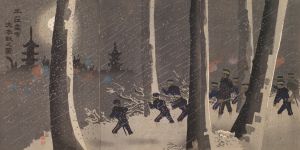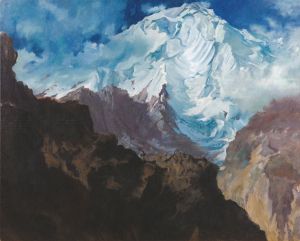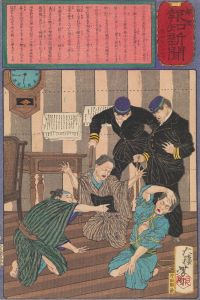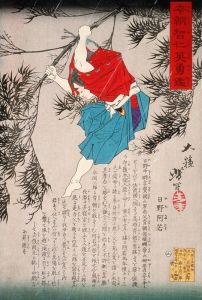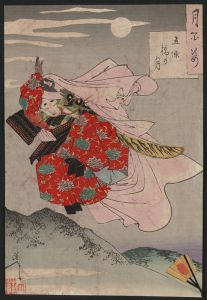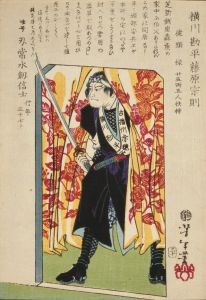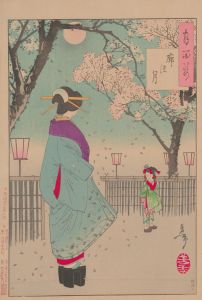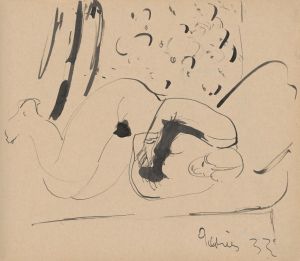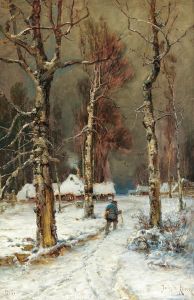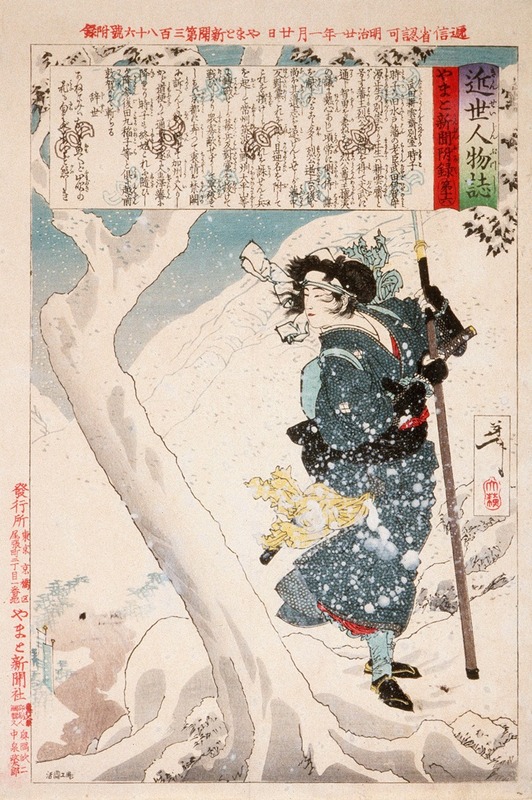
Takeda Kōunsai’s Mistress Tokiko in the Snow
A hand-painted replica of Tsukioka Yoshitoshi’s masterpiece Takeda Kōunsai’s Mistress Tokiko in the Snow, meticulously crafted by professional artists to capture the true essence of the original. Each piece is created with museum-quality canvas and rare mineral pigments, carefully painted by experienced artists with delicate brushstrokes and rich, layered colors to perfectly recreate the texture of the original artwork. Unlike machine-printed reproductions, this hand-painted version brings the painting to life, infused with the artist’s emotions and skill in every stroke. Whether for personal collection or home decoration, it instantly elevates the artistic atmosphere of any space.
"Takeda Kōunsai’s Mistress Tokiko in the Snow" is a woodblock print created by the renowned Japanese artist Tsukioka Yoshitoshi (1839–1892), one of the last great masters of the ukiyo-e tradition. This artwork is part of Yoshitoshi's series "New Forms of Thirty-Six Ghosts" (Shinkei Sanjūrokkaisen), which was published between 1889 and 1892. The series is celebrated for its imaginative depictions of supernatural themes, folklore, and historical narratives, often blending realism with fantastical elements.
The print portrays Tokiko, the mistress of Takeda Kōunsai, standing in a snowy landscape. She is depicted wearing traditional Japanese attire, with her kimono and hair styled in a manner typical of the late Edo and early Meiji periods. The snow-covered setting emphasizes a sense of isolation and melancholy, a hallmark of Yoshitoshi's ability to evoke emotion through his compositions. The delicate rendering of the snow and the figure's posture reflect Yoshitoshi's mastery of detail and atmosphere.
The subject of the print, Tokiko, is associated with Takeda Kōunsai, a historical figure whose life and deeds are tied to the tumultuous period of the late Edo era. However, specific details about Tokiko's life and her connection to Kōunsai remain sparse, and much of her story is intertwined with legend and artistic interpretation. Yoshitoshi's work often drew inspiration from historical and literary sources, reimagining them with his unique artistic vision.
This print exemplifies Yoshitoshi's late-career style, characterized by a refined use of color, intricate line work, and a focus on psychological depth. By the time he created this series, Yoshitoshi had established himself as a leading figure in the transition of ukiyo-e into the modern era, incorporating elements of Western art while maintaining traditional Japanese aesthetics.
"New Forms of Thirty-Six Ghosts" was one of Yoshitoshi's final major works before his death in 1892. The series reflects his fascination with the supernatural and his ability to convey complex narratives through visual art. Today, Yoshitoshi's prints, including "Takeda Kōunsai’s Mistress Tokiko in the Snow," are highly regarded for their artistic and historical significance, offering insight into the cultural and social changes of 19th-century Japan.





